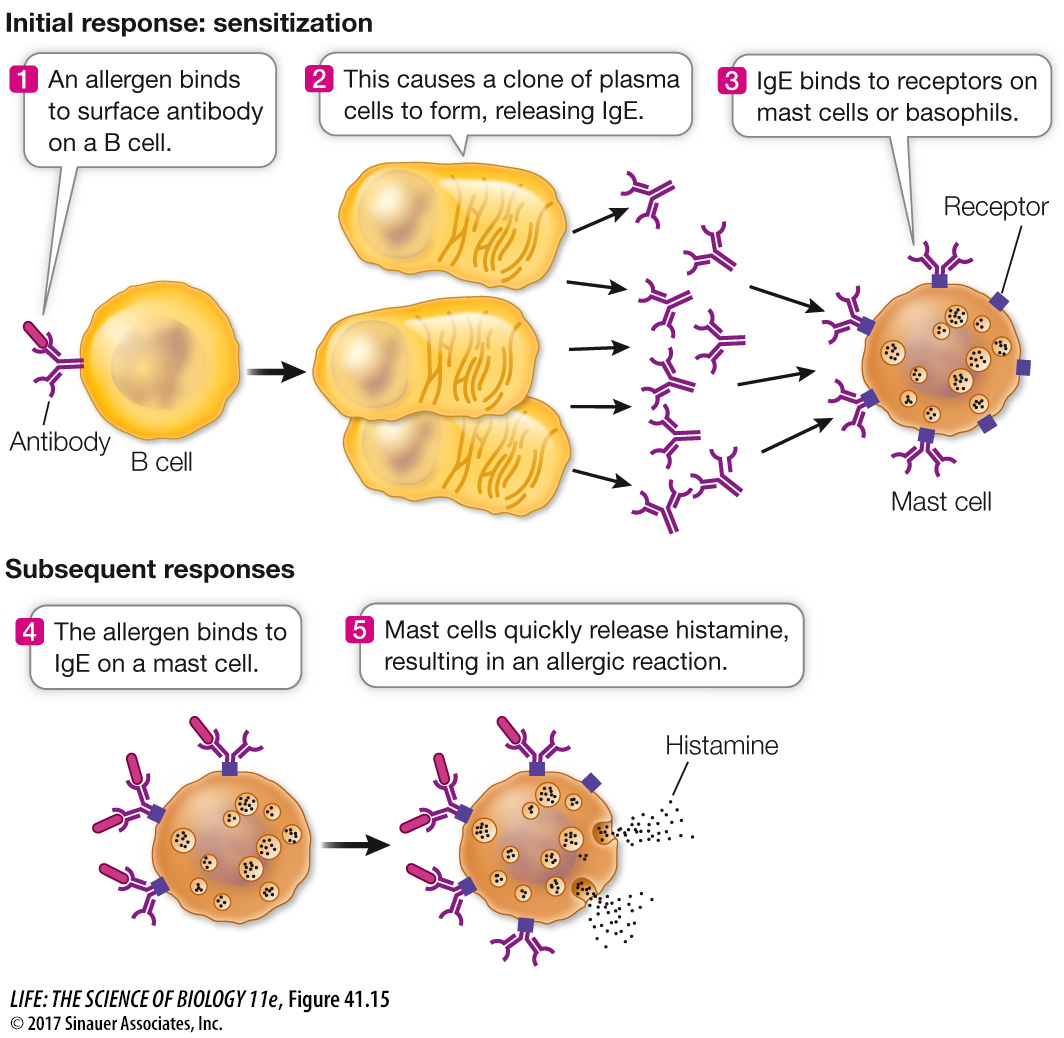The immune system mounts an excessive response in allergic reactions
886
An allergic reaction arises when the human immune system overreacts to (is hypersensitive to) a dose of antigen. Although the antigen itself may present no danger to the host, the inappropriate immune response may produce inflammation and other symptoms, which can cause serious illness or even death. Allergic reactions are the most familiar examples of this phenomenon. Allergic reactions may involve immediate hypersensitivity or delayed hypersensitivity.
IMMEDIATE HYPERSENSITIVITY Immediate hypersensitivity arises when an allergic individual is exposed to an antigen (in this case referred to as an allergen) from the environment, such as a food, pollen, or the venom of an insect. In response to the allergen, the individual makes large amounts of IgE. When this happens, mast cells in tissues and basophils in the blood bind the constant end of the IgE. If that individual is exposed to the same allergen again, binding of the allergen to the IgE causes the mast cells and basophils to rapidly release a large amount of histamine (Figure 41.15). This results in symptoms such as dilation of blood vessels, inflammation, and difficulty breathing. If not treated with antihistamines, a severe allergic reaction can lead to death. It is not known why some people produce excessive amounts of IgE in response to allergens. There is some evidence for genetic factors predisposing people to allergic responses.

Allergy to pollen can be treated using a process called desensitization. The process involves injecting small amounts of the allergen (typically just an extract of the offending plant tissue) into the skin—
Desensitization does not work well for food allergens because the IgE response to those substances is so strong that even a small amount of antigen provokes it. The best approach for those with food allergies is to avoid foods containing the allergens. This can be difficult, but food labels listing all the ingredients are helpful. Molecular biologists are beginning to identify the antigens that act as allergens, with the hope of developing vaccines or genetically modified foods that lack the allergenic epitopes.
DELAYED HYPERSENSITIVITY Delayed hypersensitivity is an allergic reaction that does not begin until hours after exposure to an antigen. In this case the antigen is taken up by antigen-